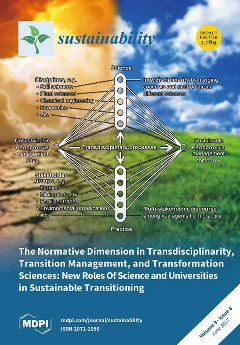1
Global Carbon Project, National Institute for Environmental Studies, 16-2 Onogawa, Tsukuba, Ibaraki 305-8506, Japan
2
ESARQ School of Architecture, Universitat Internacional de Catalunya (UIC), Immaculada 22, Barcelona 08017, Spain
3
Social Sciences Unit, Gran Sasso Science Institute (GSSI), Viale Francesco Crispi 7, 67100 L’Aquila, Italy
4
Environmental Laboratory, US Army Engineer Research and Development Center, 696 Virginia Rd, Concord, MA 01742, USA
5
Institute for Housing and Urban Development Studies, Erasmus University Rotterdam, 3062 PA Rotterdam, The Netherlands
6
Department of Urban Studies and Planning, Massachusetts Institute of Technology, Cambridge, 77 Massachusetts Ave, Cambridge, MA 02139, USA
7
Basque Centre for Climate Change (BC3), Edificio Sede, Planta 1, Barrio Sarriena s/n, Parque Científico UPV/EHU, Leioa 48914, Spain
8
Centre for Urban Research, School of Global Urban and Social Studies, RMIT University, Melbourne 3000, Australia
9
School of Community and Regional Planning, University of British Columbia, 6333 Memorial Rd, Vancouver, BC V6T 1Z4, Canada
Abstract
Resilience is a multi-faceted concept frequently used across a wide range of disciplines, practices, and sectors. There is a growing recognition of the utility of resilience as a bridging concept that can facilitate inter-and transdisciplinary approaches to tackle complexities inherent in decision making
[...] Read more.
Resilience is a multi-faceted concept frequently used across a wide range of disciplines, practices, and sectors. There is a growing recognition of the utility of resilience as a bridging concept that can facilitate inter-and transdisciplinary approaches to tackle complexities inherent in decision making under conditions of risk and uncertainty. Such conditions are common in urban planning, infrastructure planning, asset management, emergency planning, crisis management, and development processes where systemic interdependencies and interests at stake influence decisions and outcomes. A major challenge that can undermine the use of resilience for guiding planning activities is the value-laden and contested nature of the concept that can be interpreted in a variety of ways. Because resilience is context-specific and generally depends on local aspirations, this issue can be partially tackled by adopting participatory approaches for the conceptualization of resilience. This paper provides an example of how co-design methods can be employed for conceptualizing resilience. The Structured Interview Matrix was used as a technique to facilitate discussions among a diverse group of researchers and practitioners attending the International Workshop on Tools and Indicators for Assessing Urban Resilience. Participants deliberated on issues related to constituent elements of urban resilience, including its position vis-
Full article





